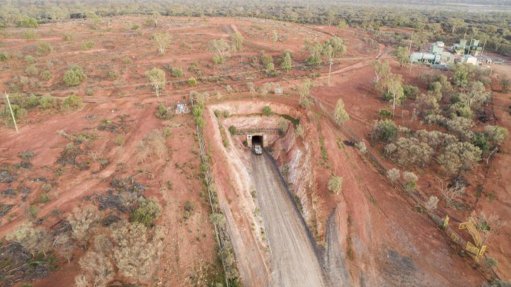Modernisation process could assist economic prosperity


SIETSE VAN DER WOUDE The transition to modernised mining needs to afford all stakeholders the chance to develop policies and programmes which ensure sustainability beyond minin
The industry needs to modernise, “but let’s be clear about what modernisation is not – it is not simply mechanisation, it is far more than that”, says Minerals Council South Africa modernisation and safety senior executive Sietse van der Woude,
He describes it, instead, as a process of transition and transformation of the mining industry, which puts people at the centre of mining, making mining safer, healthier and more competitive.
“Not only will a modern mining industry optimally extract and beneficiate the country’s natural resources, it will benefit local communities as well as the national economy; it will procure locally and be a preferred employer of well-trained people as well as create fair returns for investors,” Van der Woude says.
As a key strategic priority for theMinerals Council,modernisation is an opportunity to address some of South Africa's most concerning issues, including health and safety, job retention and creation, as well as preventing the premature closure of mines and ensuring economically viable production.
Van der Woude highlights the importance of a ‘Just Transition’ to modernised mining, which encompasses several social interventions to secure jobs and livelihoods throughout the transition.
“South African mining companies are acutely aware of the need to ensure social inclusion and acceptance. Without social buy-in, little succeeds,” he comments.
As such, the transition to modernised mining needs to afford all stakeholders the chance to develop policies and programmes which ensure sustainability beyond mining.
Van der Woude cites a multi-disciplinary research consortium that discussed the need for a Just Transition in Mining at the twenty-fourth Conference of the Parties to the United Nations Framework Convention on Climate Change, in Poland, in 2018.
The consortium encouraged new, collaborative, multi-stakeholder ways of thinking about mining, mine closure and post-mining futures – thinking that is informed by the wellbeing of people living in mining towns.
The Minerals Council, recognising the need for a Just Transition approach, has established a five-fold approach.
Firstly, it aims to build leadership consensus by establishing a common vision. Secondly, it prioritises the sustainability of the process and seeks to shape the overarching South African research, development and innovation (RDI) policy environment, while, thirdly, also focusing on human-centred innovation to improve society through modernisation.
Fourthly, the Minerals Council wants to accelerate innovation processes to ensure quicker commercialisation and industry adaption, and lastly it seeks to enhance inter- and intra-industry collaboration to solve challenges and pool resources for a greater and more cost-effective impact.
“The Minerals Council’s principal stakeholders are its members. For collaboration to work we need to start at home.” As such the body includes all its member companies in its plans and encourages them to consider and adopt new methods and technologies.
Additionally, the Minerals Council maintains a strong relationship with the Department of Science and Technology (DST) and the Department of Trade and Industry, and works closely with other industry bodies, universities and research institutions.
Van der Woude says that the Minerals Council is heartened by modernisation’s rising profile. “Mining RDI is firmly back on the national agenda as evidenced by the 2018 White Paper on Science, Technology and Innovation, which emphasises the importance of “modernising of existing industries like agriculture and mining”. This White Paper has eight references to mining . . .the 1996 White Paper had none.”
He also points to institutions like the Council for Industrial and Scientific Research, and the universities of Pretoria and the Witwatersrand, which have, or are in the process of, recreating their roles in mining modernisation.
Moreover, the 2018 publication of Mining Charter 3 and the most recent iteration of the Leadership Compact on Competitiveness and Growth, both demonstrate the industry’s commitment to RDI.
Mandela Mining Precinct
“The development and implementation of a modernisation-focused strategy was started in 2017,” Van der Woude comments, adding that it evolved from the Minerals Council’s involvement in 2015 multi- stakeholder discussions about the industry’s future and viability.
“Since then government and industry have implemented several initiatives in light of the urgency and importance of improving competitiveness.”
Van der Woude points to the South African Mining Extraction RDI (SAMERDI) Strategy, which focused on the revitalisation of local RDI in mining and mining equipment manufacturing, and which is co-funded by the DST and the Minerals Council.
The initiative aims to materially improve the RDI base of mining in South Africa and led to the establishment of a new innovation, manufacturing and sustainable development centre – the Mandela Mining Precinct.
“The function of the precinct is to coordinate research activities toward the revitalisation of mining through the development of e.g. next-generation mechanised mining systems,” Van der Woude comments.
Ultimately, the precinct will help advance mining RDI, make the South African mining industry more competitive and improve the RDI capabilities of local firms.
“The primary challenge remains the building of consensus around what modernisation could mean, as well as how best to modernise the industry while simultaneously improving competitiveness, growth, and social relations with key stakeholders,” Van der Woude states.
He concludes that while the journey toward modernisation will be challenging, its adoption and social acceptance is inextricably linked to the industry’s survival.
Comments
Press Office
Announcements
What's On
Subscribe to improve your user experience...
Option 1 (equivalent of R125 a month):
Receive a weekly copy of Creamer Media's Engineering News & Mining Weekly magazine
(print copy for those in South Africa and e-magazine for those outside of South Africa)
Receive daily email newsletters
Access to full search results
Access archive of magazine back copies
Access to Projects in Progress
Access to ONE Research Report of your choice in PDF format
Option 2 (equivalent of R375 a month):
All benefits from Option 1
PLUS
Access to Creamer Media's Research Channel Africa for ALL Research Reports, in PDF format, on various industrial and mining sectors
including Electricity; Water; Energy Transition; Hydrogen; Roads, Rail and Ports; Coal; Gold; Platinum; Battery Metals; etc.
Already a subscriber?
Forgotten your password?
Receive weekly copy of Creamer Media's Engineering News & Mining Weekly magazine (print copy for those in South Africa and e-magazine for those outside of South Africa)
➕
Recieve daily email newsletters
➕
Access to full search results
➕
Access archive of magazine back copies
➕
Access to Projects in Progress
➕
Access to ONE Research Report of your choice in PDF format
RESEARCH CHANNEL AFRICA
R4500 (equivalent of R375 a month)
SUBSCRIBEAll benefits from Option 1
➕
Access to Creamer Media's Research Channel Africa for ALL Research Reports on various industrial and mining sectors, in PDF format, including on:
Electricity
➕
Water
➕
Energy Transition
➕
Hydrogen
➕
Roads, Rail and Ports
➕
Coal
➕
Gold
➕
Platinum
➕
Battery Metals
➕
etc.
Receive all benefits from Option 1 or Option 2 delivered to numerous people at your company
➕
Multiple User names and Passwords for simultaneous log-ins
➕
Intranet integration access to all in your organisation



















